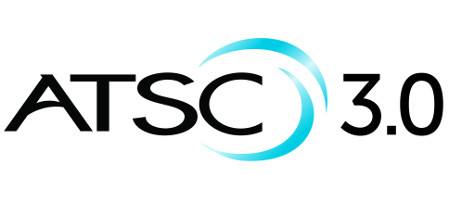Increasing Channel Bandwidth to Broadcast 8K
In November 2017, the FCC approved the deployment of ATSC 3.0 (aka “NEXTGEN TV”) for U.S. broadcasters. This historic decision gave our industry the authority to use the same 6 MHz channels for ATSC 1.0 to deploy the new standard, which combines over the air broadcast with IP.

“This new TV transmission standard promises to allow broadcasters to innovate, improve service and use their spectrum more efficiently,” the FCC said at the time. “It also has the potential to enable broadcasters to provide consumers with a more immersive and enjoyable television viewing experience on both home and mobile screens.”
The ability to broadcast 4K is one of the more attractive features of ATSC 3.0. When the FCC approved ATSC 3.0, 4K was just beginning to make inroads into the marketplace, while 8K wasn’t even a consideration.
Nearly two years later, people are beginning to take even 8K seriously.
In December 2018, Japan’s public broadcaster NHK—which had been touting its 8K Super Hi Vision for years—launched daily 8K satellite broadcasts on its NHK BS8K channel. 8K was also prominent at the 2019 International CES in January.
Currently the UHD 8K technology market is estimated at approximately $2.9 billion, but projected to reach $26.8 billion by 2024 according to research firm MarketWatch.
GETTING THE MOST OUT OF 6MHZ
The professional video industry's #1 source for news, trends and product and tech information. Sign up below.
With 33.18 million pixels and 68 billion colors, UHD 8K provides the best Quality of Experience (QoE), approaching human eyesight in pixel, density fields of view and color gamut (Ling Ling Sun, 5G And UHD 8K- A Developing Symbiosis). At 12 bit color and 120 Hz refresh rate, with HEVC encoding, the bit rate of UHD 8K is about 200 Mbps.
Currently, there is no digital terrestrial broadcast method that can deliver the 200 Mbps content in a 6 MHz channel. (The transponder bandwidth of NHK’s 8K satellite broadcast is 34.5 MHz. Using 16 APSK, the transmission rate is approximately 100 Mbps.)
For the 6 MHz channel, the maximum theoretical capacity of ATSC 3.0 is 57 Mbps. However, using current ATSC 1.0 transmission parameters and covering similar area, more realistic ATSC 3.0 capacity is estimated to be 26 Mbps, with 256 QAM, about 33% more than the 19.4 Mbps capacity of ATSC 1.0 standards.
There are several ways to increase the channel capacity in ATSC 3.0: Quadrature Amplitude Modulation (QAM), Multiple Input, Multiple Output (MIMO, support for 2x2 using polarization) and Channel Bonding (supporting two RF channels). Clearly, the current ATSC 3.0 standards can’t provide the needed 200 Mbps capacity for UHD 8K (see Table 1).

Digital terrestrial television broadcasting is defined by hardware infrastructure and technical policies/standards. Policies/standards often connect to other policies/standards to form a “policy/standard network.” ATSC 3.0 is a part of such a policy/standard network. Assuming that the hardware infrastructure of digital terrestrial television broadcasting remains unchanged, one can focus on the policy/standard network and use viable system of networking (VSON) to manage its complexity. In the VSON approach, a technology standard doesn’t exist in a vacuum—it coexists with its environment—UHD 8K is a perfect example of that future environment.
For a technology standard to survive, it must adapt to a new environment and co-evolve with it. There are two possible ways to achieve this.
One is to change policy in management, another is to increase services in operation. Policy defines the relevant environment, and operation provides the requisite variety and in ATSC 3.0, both changes are needed. In a policy change, ATSC 3.0 should support 20 MHz bandwidth. In an operation change, ATSC 3.0 should include UHD 8K and multiple UHD 4K services.
Specifically, an additional 20 MHz channel bandwidth is proposed for ATSC 3.0 to support a variety of new services. With 2x2 MIMO, 64 QAM and 20 MHz channel bandwidth, estimated capacity is about 130 Mbps. With future Versatile Video Coding (VVC), a UHD 8K program at 120 Hz frame rate can be compressed to a bit rate of 120 Mbps while a UHD 8K program at reduced 60 Hz frame rate could be broadcast without MIMO.
If UHD 8K service is about the future, then multiple UHD 4K service is about the present. Currently 4K TV household penetration in the U.S. is more than 30%, and 48% of non-4K TV owners plan to get a new TV within the next year, according to Leichtman Research Group. By 2024, the global market for 4K technologies could reach $144 billion, according to Market Research Engine.
Advances in coding technology and high capacity broadcasting channels will enable a shift from traditional single view live broadcasting to multiple view live broadcasting. This content diversity will increase viewer engagement, and potentially increase viewer loyalty.
In addition to enabling the new services, the 20 MHz channel bandwidth policy improves spectrum efficiency, simplifies management and saves on CAPEX and OPEX. This is because by merging three 6 MHz channels into one 20 MHz channel, two guard bands that separate the three 6 MHz channels are converted into a part of the 20 MHz bandwidth. Three 6 MHz channel transmitter sites are also reduced to one 20 MHz transmitter site. In a sense, it is a centrally managed spectrum shared by the three 6 MHz channel licensees.
However, the improvement of channel capacity alone isn’t enough for UHD. When spectrum bandwidth changes, the number of available channels will also change. As a consequence, channel sharing and frequency re-use are important factors to consider in spectrum planning. VSON provides a cybernetic platform for such planning, allowing dynamic channel sharing, optimal frequency re-use and SFNs to be monitored, controlled and orchestrated intelligently.
Channel capacity will always be an issue for broadcasters with the biggest challenge being spectrum availability. Without major resource and technology upgrades, will broadcasters be able to support future services when circumstances change? The viable system approach proposed in this paper provides a possible solution.
Ling Ling Sun is assistant general manager/CTO for Nebraska Educational Telecommunications.
Many thanks to Tom Butts for help in editing this article.
For a comprehensive source of TV Technology’s ATSC 3.0 coverage, see ourATSC3 silo.

Ling Ling Sun is Vice President of Technology for Maryland Public Television and former CTO at Nebraska Public Media from 2014 to 2025.
A respected industry leader, Sun serves as a director on the ATSC Board and is an active member of the NAB Television Technology Committee. Her commitment to public broadcasting is evidenced by her two consecutive terms chairing the PBS Engineering Technology Advisory Committee (ETAC) from 2013 to 2018, alongside her service on the PBS Interconnection Committee. Sun further demonstrated her leadership by heading the NAB Broadcast Engineering & Information Technology (BEIT) Conference Program Committee in both 2023 and 2024. Additionally, she has contributed her expertise to the Technical Panel of the Nebraska Information Technology Commission.
